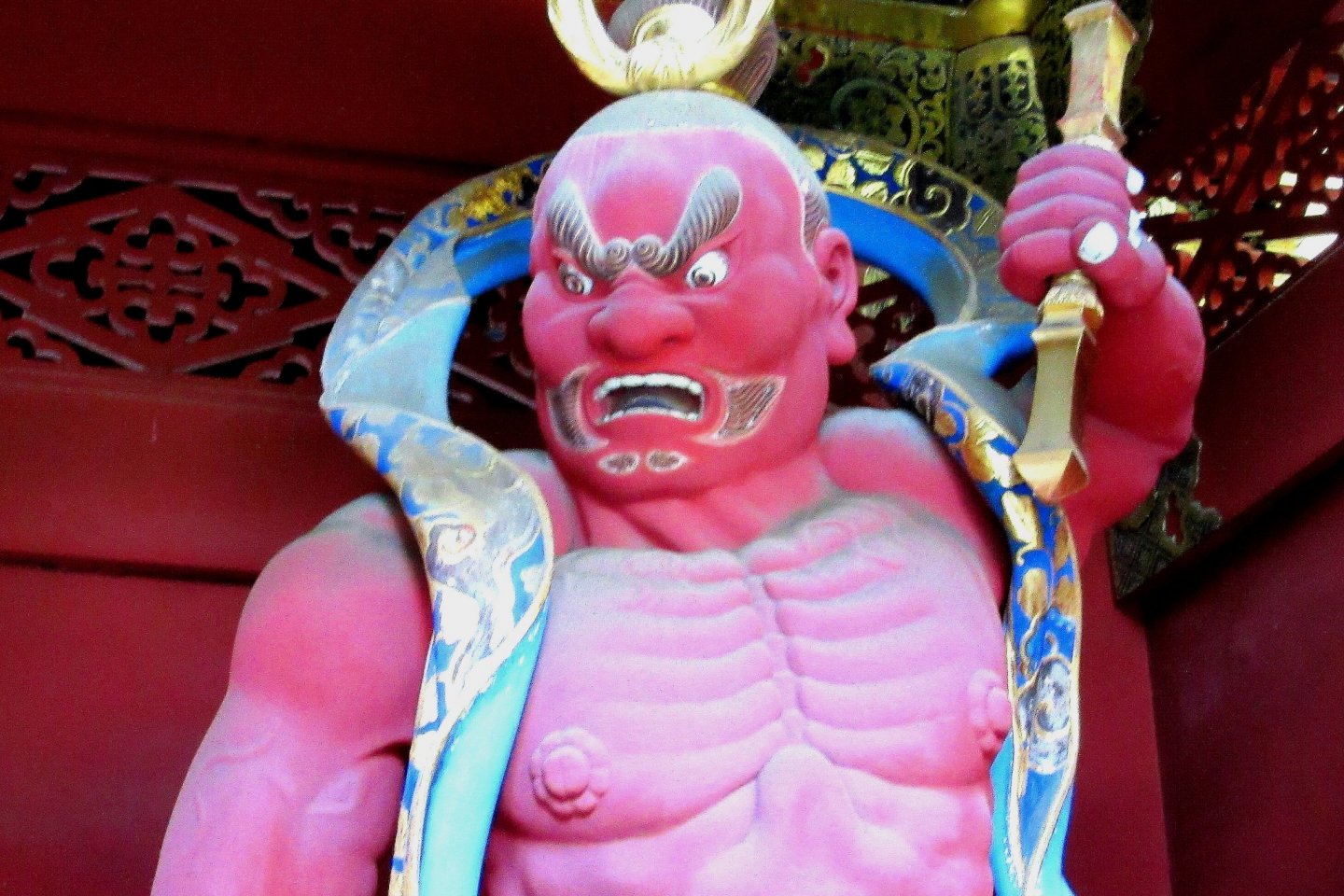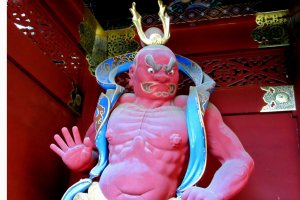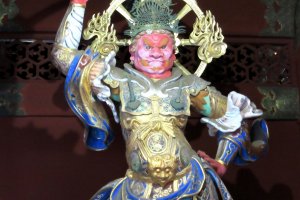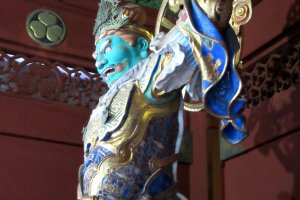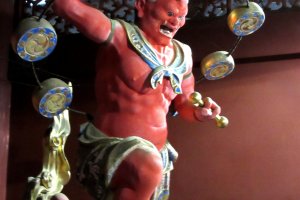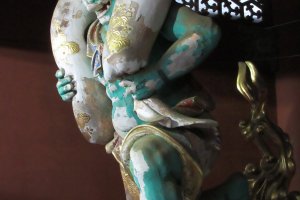Entering a Buddhist temple in Japan you will come across two fierce looking warrior statues facing you from both sides of the entrance. Their sizes vary from giant to not-so-giant and they'll be made from stone, metal or wood. The painted ones are particularly striking.These fierce warrior statues are Nio statues, guardians of the Buddhist faith.

At Shinto shrines you'll often come across a pair of kitsune foxes or komainu dogs as guardians. They certainly have their appeal but the Buddhist Nio guardians are different. They look ready to attack and I was interested to know about their meaning and importance.
In many ancient cultures the 'Gates of the World' are watched over by two guardians standing on both sides of the gate. In Japan these guarded gates with their two warriors are called Niomon. It’s obvious that Niomon have a visual impact, but there is also an aural element too.

The guardian on the right has his mouth opened making the Japanese sound 'a.'The left has his mouth closed making the sound 'n'. These come from the ancient Sanskrit Devanagari language and represent birth and death, the beginning and end, of all things. Digging deeper, the combination of the 'a' and 'n' sounds in Japanese is equivalent to the Sanskrit 'aum' which signifies 'everything' or 'the absolute. This 'aum' is very important in Buddhism.
In the temples of Nikko you will come across many skilfully carved and brightly painted Nio statues. However, along with the fierce countenance of many Nio, there are some gates protected by Nio with quiet facial expressions. You'll see a good example at the entrance of Fushimi Inari Taisha in Kyoto. The still have open and closed mouths, but one is older and the other, younger.

When visiting the many temples of Japan, it’s important to understand that each element in a temple has a deep and an often ancient meaning.
